“Genesis and Spirit - Showcase of Henan Province Intangible Cultural Heritage”
Supporting Organisations: The Ministry of Culture of the People’s Republic of China; The People’s Government of Henan Province; Secretariat for Social Affairs and Culture of the Macao S.A.R. Government
Organisers: The Bureau for External Cultural Relations and Office for Culture Affairs with the Hong Kong, Macau and Taiwan Regions of the Ministry of Culture of the People’s Republic of China; The Cultural Affairs Bureau of the Macao S.A.R. Government; The Department of Culture of Henan Province
Co-organiser:

In order to commemorate the 10th Anniversary of the Historic Centre of Macao as World Heritage, as well as the 2015 China Cultural Heritage Day, the organiser are hosting “Genesis and Spirit – Showcase of Henan Province Intangible Cultural Heritage”. This two week event includes an exhibition, performances, demonstrations, workshops and a lecture, showcasing Henan’s vivid intangible cultural heritage elements to the public.
13 to 28 June 2015
Enquiries: 8399 6699 (during office hours)
The opening ceremony will take place at East Square, Galaxy MacauTM at 11am on 13 June
Free admission
Download Leaflet
|
Activity
|
Date
|
Time |
Content
|
|
Exhibition
|
13 to 28 June
|
10am-10pm |
Traditional art and techniques, among other 10 representative items of Henan Province intangible cultural heritage
|
|
Performances
|
13 and 14 June
|
5pm (13/6 11am (14/6)
|
Theatre, music, traditonal dance, folk arts, traditional sports, recreational activities and acrobatics, among other 10 representative items of Henan Province intangible cultural heritage
|
|
Lecture
|
14 June
|
2.30pm-3.30pm |
Themed lecture on the protection works and general overview of Henan Province intangible cultural heritage
|
|
Folk Arts Showcase
|
14 to 28 June
|
10.30am-1.30pm 2.30pm-5.30pm
|
Paper cutting, wooden plates with New Year images, paper lanterns
|
|
Folk Arts Workshops
|
20, 21, 27 and 28 June
|
10.30am-1pm, 3pm-5.30pm
|
Paper cutting, making of wooden plates with New Year images, paper lanterns, among others
|
Introduction to the exhibition on items of Henan Province intangible cultural heritage 2015
Wooden Plates with New Year Images from Zhuxian City –Representative Item of Intangible Cultural Heritage at national level
Considered the original wooden plates with New Year images and a “living fossil” of Chinese folk arts in China, according to the Dongjing Meng Hua Lu and other volumes, the plates’ origin dates back to the Song Dynasty of the North and flourished up to the Ming and Qing dinasties. They feature symmetry of elements, with simple and precise lines, unadorned molding, fully displaying the simplicity, character and bold and spontaneaou artistic taste of the inhabitants of China’s central plains.
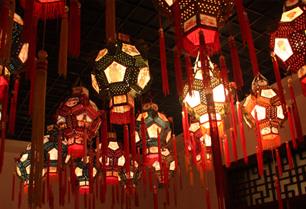
Lanterns (Paper Lanterns from Kaifeng City) –Representative Item of Intangible Cultural Heritage at national level
The colourful lanterns from Kaifeng (once known as Bianjing) became popular during the Sui and Tang dynasties, flourishing up to the Song Dynasty. “Along the River During the Qing Ming Festival” takes different types of colourful lanterns to represent the prosperity of paper lanterns during the Song Dynasty of the North. The shapes and production techniques of the Bianjing lanterns originate in traditional folk moldings, featuring simple lines and cheerful colours, a unique style and auspicious messages, and are very popular.
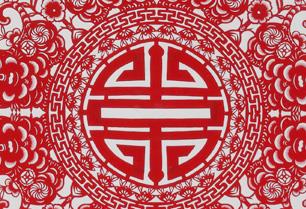
Paper cutting –Representative Item of Intangible Cultural Heritage at national level
Paper cutting is a folk art boasting a long history, with distinct regional characteristics and strong local flavour. The pictographic paper cutting representative of Lingbao city and the municipalities of Lushi and Shan, located in western Henan, feature a particular style, are are highly sought after and widely used in weddings, blessings, prayers, as birthday gifts to the elderly, to ward off evil spirits and in prayers for rain, among other daily life rituals.

Clay Figurines (Clay dogs from the Huaiyang municipality) – Clay Figurines (Clay dogs from the Huaiyang municipality) – Representative Item of Intangible Cultural Heritage at national level 淮陽泥泥狗又稱陵狗,是淮陽
Huaiyang clay dogs, also known as mountain dogs, is a regional generic term for all clay toys. Featuring rich themes, simplicity, lack of embellishments and mysterious characteristics, they are considered to represent ancestors’ sacrifices to the gods and symbolise a worship culture and building of totems. There are over two hundred types of mouldings of birds and other animals, featuring monkey-people, monkeys holding their belly and deers, etc.
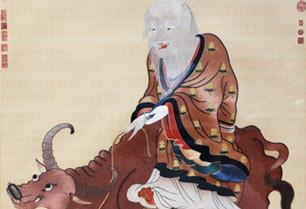
Bian Embroideries – Representative Item of Intangible Cultural Heritage at national level
Also known as “Song embroideries”, they date back their origins to the Song Dynasty of the North, developing throughout time and achieving a remarkable quality. According to the Dongjing Meng Hua Lu, Kaifeng was the capital of the Song Dynasty of the North, featuring a “weaving courtyard” in its palace, where clothing and adornments for the princess, the Emperor’s daugther, were embroidered, as well as clothing for high officials, and therefore these embroideries became known as “court embroideries” or “officials’ embroideries”.
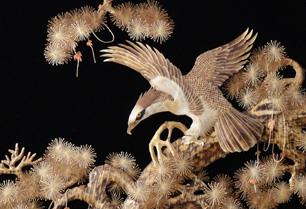
Collages with Wheat Stems – Representative Item of Intangible Cultural Heritage at national level
Also known as wheat stem paintings, they once belonged to the courts crafts, and its origins date back to the Sui Dynasty. Wheat paintings present several characteristics such as a bright glow, a beautiful decorative effect anda an extraordinary artistic charm. They reallisticaly portray people, birds and flowers and other animals, emanating a natural simplicity, elegance and beauty.
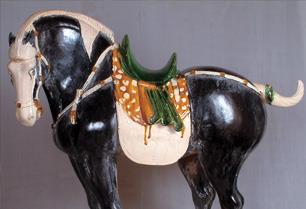
Tang Sancai Figurines Making Techniques –Representative Item of Intangible Cultural Heritage at national level
Tang Sancai is the generic term for ceramic products of coloured glazing of the Tang Dynasty featuring mostly the colours yellow, green and white, thereby becoming known as “Tang of three colours” [literal translation of Tang sancai]. The most representative pieces include human figures, horses, camels and household utensils, with faultless shapes and magnificente colours, extremely well decorated, known as the “Orient’s artistic treasures”.
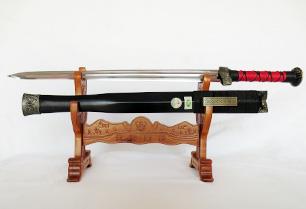
Tangxi Swords Smelting Process – Representative Item of Intangible Cultural Heritage at national level
Tangxi swords boast a long history and are mentioned in the Record of the Grand Historian, or Shiji, and in the Wucheng Annals. The smelting technique used is unique, inheriting the ancient arts of manual hammering arts and metal transformation. Its main characteristics are “strength, resistence, firmness and flexibility”, possessing a high academic, cultural and artistic value.

Yellow River Carved Inkstones – Representative Item of Intangible Cultural Heritage of Henan Province
The Yellow River carved inkstones are one of the four most renowned inkstones in the history of China, the others being the Duanxi, the Shezhou and the Tao River inkstones. The book Inkstones Record by Li Zhiyan, written during the Song Dynasty, refers: “The Yellow River inkstones are considered the best of the Tang period”. The stones feature four main characteristics: firmness, good ink distribution, extraordinary colours and beautiful carvings, and are a favourite among academics.

Qin Silk Art – Representative Item of Intangible Cultural Heritage of Henan Province
The origins of Qin silk art date back to the reign of the last Ming Dynasty emperor, Chongzhen, boasting up over 400 years of history and tradition. Its delicate and unique pieces are crafted with extraordinary skill and are worthy of admiration as well as collecting. The patterns used give particular attention to “spirit, charm, taste and elegance”, assembling and reflecting the cultural characteristics of China’s central plains regions, namely greatness of spirit, charm, strong taste and elegance.
Extra information
Outline of Henan Province Intangible Cultural Heritage
Intangible cultural heritage refers to “all kinds of traditional cultural manifestations trasmitted by a people from generation to generation and considered a part of its cultural heritage, as well as objects and places pertaining to those traditional cultural manifestations”; it is the cultural heritage of humanity, intangible, that evolves organically and is passed on orally from generation to generation. Because it does not have a form and evolves, this cultural heritage is found at the heart of a people, and it is its living memory and the genes of a civilization, reflecting a people’s wisdom and spirit.
The plains of Henan Province are the cradle of the Chinese people and civilization, featuring a rich culture and heritage and are the biggest national source of intangible cultural heritage. The Shaolin martial arts, Tai Chi, opera, Jun and Ru porcelain making techniques, the artists’ gathering on the 13th day of the lunar year, the New Year wooden paintings of Zhuxian, among others, represent a diverse intangible cultural heritage of high renown and influence not only on a national level but also at a world level.
In recent years, owing to the Government’s leadership and the participation of all social sectors, the Henan Province intangible cultural heritage protection works have conquered a considerable success. By the end of 2009, a survey of intangible cultural heritage was mostly concluded, revealing all kinds of historical traces in a total of 1,800,000 (for 220,000 of which a base-project was launched). In 2014, Henan Province had 1 item in the World Heritage List, 113 items in the National Intangible Cultural Heritage List, 568 items in the Provincial Intangible Cultural Heritage List, 2181 items in the County Intangible Cultural Heritage List and 7086 items in the Municipal Intangible Cultural Heritage List. There are 84 people recognised as representatives of Intangible Cultural Heritage at national level, 641 people as representatives of Intangible Cultural Heritage at provincial level, 2534 people as representatives of Intangible Cultural Heritage at county level and 6922 people as representatives of Intangible Cultural Heritage at municipal level.
Currently, there are 5 model-bases for intangible cultural heritage protection at national level, 2 research bases on intangible cultural heritage protection at national level, 5 experimental location for protection of Henan Province cultural organics, 33 research bases on Henan Province intangible cultural heritage, 25 social promotion bases on Henan Province intangible cultural heritage, 68 exhibition halls (teaching venues) of Henan Province intangible cultural heritage and 30 model-bases for protection of Henan Province intangible cultural heritage.
In order to ensure the smooth execution of the performances, the Ruins of St. Paul’s and the Museum of Sacred Art and Crypt will be closed from 9:00am to 6:00pm on 13 and 14 June. We apologize for the inconvenience.